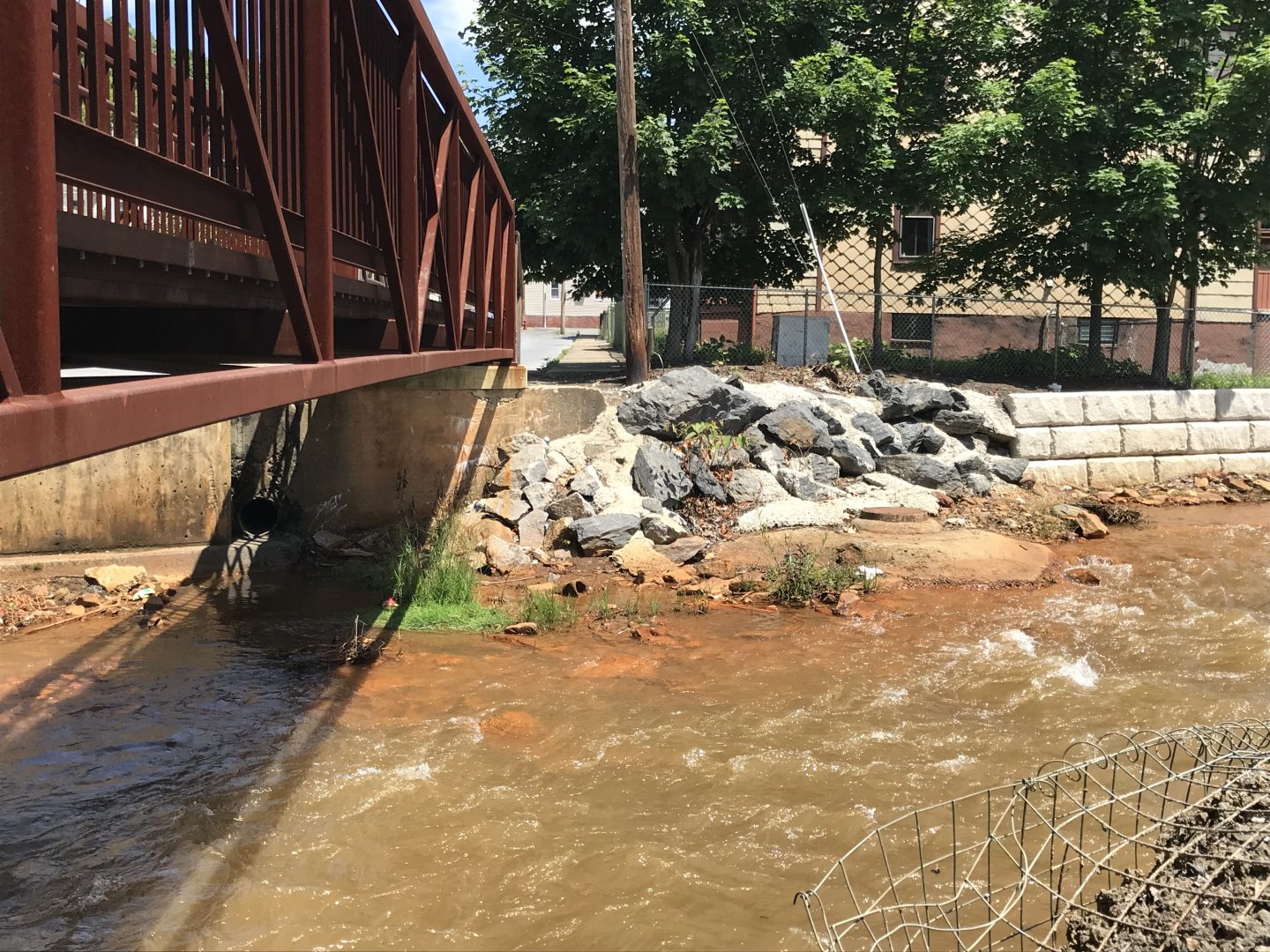
This file photo shows Shamokin Creek in Shamokin, Pa. Drainage from thousands of abandoned coal mines has contaminated thousands of miles of rivers and streams in the state.
Marie Cusick / StateImpact Pennsylvania


This file photo shows Shamokin Creek in Shamokin, Pa. Drainage from thousands of abandoned coal mines has contaminated thousands of miles of rivers and streams in the state.
Marie Cusick / StateImpact Pennsylvania

Marie Cusick / StateImpact Pennsylvania
This file photo shows Shamokin Creek in Shamokin, Pa. Drainage from thousands of abandoned coal mines has contaminated thousands of miles of rivers and streams in the state.
Along with the new federal spending bill passed by the Senate on Thursday and by the House Friday afternoon, there’s a provision that allows money to be used for the long-term cleanup of waterways polluted by abandoned coal mines.
“We’re just incredibly excited,” said Dana Kuhnline, campaign manager for the ReImagine Appalachia Coalition.
The bill is headed to President Biden for his signature.
The issue stems from last year’s bipartisan infrastructure law, which provided $11.3 billion dollars for states to clean up abandoned mine lands. Pennsylvania is expected to get $3.8 billion over 15 years.
Groups like ReImagine Appalachia, Appalachian Voices and the Eastern Pennsylvania Coalition for Abandoned Mine Reclamation have been concerned that language in the infrastructure law limited the way money could be spent on cleaning up water pollution from old mines.
“What was not included was permission for states to put some of that money into long-term, what are called set-aside accounts or savings accounts, to allow for long-term water treatment of acid mine drainage,” Kuhnline said.
In Pennsylvania, mine drainage has killed aquatic life in more than 5,500 miles of streams.
Water treatment systems can restore healthy waterways, but those systems need long-term maintenance to ensure they are constantly working properly. There are many instances of treatment systems breaking down.
“Maybe it fails for a day or a week, or it gets temporarily shut down, and everything dies because the acidity goes back up in the stream, and the fish and the bugs can’t live in that,” Kuhnline explained. “So all that progress is just lost so quickly.”
If the state is going to set up AMD treatment systems, she said, there needs to be funding to ensure their continuous operation.
“Otherwise, there’s no point in even trying,” Kuhnline said.
The bill that would address this funding problem, the Safeguarding Treatment for the Restoration of Ecosystems from Abandoned Mines (STREAM) Act, was included with the federal spending package. It will allow those funds to be set aside for ongoing water treatment.
“We’re going to be able to start to solve the acid mine drainage issue with this new permission to use the funding in this way,” Kuhnline said.
The STREAM Act also gives states flexibility to use this money for mine fires and subsidence issues.
StateImpact Pennsylvania is a collaboration among WITF, WHYY, and the Allegheny Front. Reporters Reid Frazier, Rachel McDevitt and Susan Phillips cover the commonwealth’s energy economy. Read their reports on this site, and hear them on public radio stations across Pennsylvania.
(listed by story count)
StateImpact Pennsylvania is a collaboration among WITF, WHYY, and the Allegheny Front. Reporters Reid Frazier, Rachel McDevitt and Susan Phillips cover the commonwealth’s energy economy. Read their reports on this site, and hear them on public radio stations across Pennsylvania.
Climate Solutions, a collaboration of news organizations, educational institutions and a theater company, uses engagement, education and storytelling to help central Pennsylvanians toward climate change literacy, resilience and adaptation. Our work will amplify how people are finding solutions to the challenges presented by a warming world.